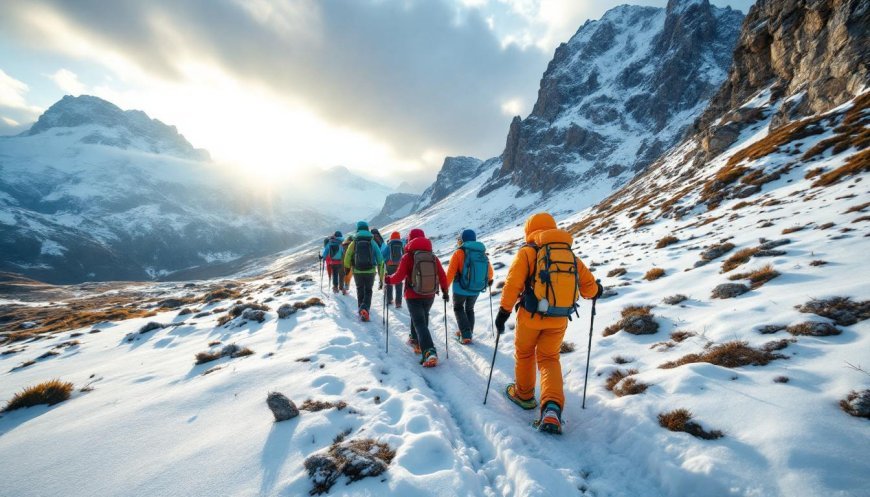Italy’s Dolomites in Crisis: Seceda’s New Visitor Fees Address Overtourism and Environmental Challenges


South Tyrol, located in the heart of Italy’s Dolomites, has long been a stunning destination for hikers and nature enthusiasts, particularly the Seceda mountain. Famous for its dramatic spiky peaks and lush meadows, Seceda offers breathtaking views, often gracing the screens of avid travelers’ social media accounts. However, the region is now facing a significant challenge: overtourism. In recent years, the rising influx of visitors has overwhelmed this once tranquil destination, leading to overcrowded hiking trails, environmental degradation, and strained relationships between tourists and locals. As tourism continues to surge, the situation has reached a boiling point, with local landowners now demanding fees for access to popular trails, including the Odle Trail.
This shift in local tourism policy has sparked a wider debate about sustainable tourism practices, environmental responsibility, and the management of natural resources in high-demand destinations. As local farmers and landowners take action to address the adverse effects of tourism, both environmental and economic, the future of Seceda and similar destinations is at a crossroads. This article examines the rising tensions in the Dolomites, the consequences of overtourism, and the steps being taken to ensure that these majestic mountains can be enjoyed sustainably for generations to come.
The Growing Popularity of Seceda and the Overtourism Crisis
- Unprecedented Tourist Numbers: The Dolomites, and in particular the Seceda mountain, have recently experienced an overwhelming influx of tourists. On a single day last week, the Odle Trail saw 8,000 hikers, a staggering number for a region that was once known for its peaceful isolation.
- Environmental Damage: The heavy foot traffic on the trails has resulted in damaged meadows and disrupted agricultural activities. Locals have raised concerns over the growing litter problem, poor behavior from visitors, and the overall impact on the natural landscape.
Seceda’s stunning landscapes, once a hidden gem in the Dolomites, have now become a hotspot for tourists, largely due to its appearance in global advertising campaigns, including a prominent feature in Apple’s iOS 7 wallpaper and a video during the iPhone 15 launch. As a result, visitors from around the world flock to the mountain, seeking the perfect Instagram shot. However, the influx of tourists has brought more harm than good to the area’s ecosystem and the quality of life for its residents.
Local Response: Introduction of Fees and the Turnstile Debate
In an effort to curb the negative impacts of overtourism, local farmers and landowners have taken matters into their own hands. In early July, they installed a turnstile at the beginning of the Odle Trail, requiring visitors to pay a €5 fee for access. This initiative, which initially met with resistance, was reinstated after local authorities failed to address the ongoing challenges faced by residents.
The purpose behind this move was to provide a solution to the environmental and economic strain caused by large numbers of tourists. According to the landowners, the toll would help fund maintenance of the trail and surrounding areas, repair damages, and reduce the burden on local resources. The fee also serves as a deterrent to casual tourists who visit for the sole purpose of taking a few photos before moving on to the next location.
Despite the intention to manage the impact of tourism, the decision to charge for access has sparked controversy. Tourism associations and mountain guides have expressed concerns over the potential for widespread toll implementation, which could lead to confusion and resentment among visitors. Furthermore, local tourism officials are working to inform tourists that the fee is not mandatory and directing them to an alternative, free route.
Broader Debate: Should Fees Become the Norm in the Dolomites?
The decision by local landowners to charge a fee for trail access has ignited a broader debate regarding the future of tourism in the Dolomites. Proponents argue that a fee-based model could provide a sustainable solution to the challenges posed by overtourism, ensuring that the region remains both accessible and protected. Critics, however, warn that such measures could deter visitors, harm the region’s reputation, and lead to conflicts over access.
One key issue is the absence of clear regulation by provincial authorities to manage tourist numbers. Tullio Mussner, the president of the Lia da Mont association, has raised concerns that a widespread fee system could lead to complications if every landowner were to impose their own charges. This lack of a coordinated strategy has prompted calls for more comprehensive regulation to protect the Dolomites from irreversible damage.
For many, the solution lies in a balanced approach that prioritizes environmental sustainability while still allowing tourists to enjoy the beauty of the region. This could include measures such as limiting access to certain areas during peak seasons, encouraging off-season tourism, and increasing fines for damaging natural sites.
The Impact of Technology and Social Media on Tourism
Another factor contributing to overtourism in the Dolomites is the role of technology and social media in driving traffic to once little-known destinations. The widespread use of social media platforms like Instagram has turned scenic spots like Seceda into must-see locations, with millions of posts encouraging followers to visit.
While this exposure has boosted local economies, it has also led to an overdependence on tourism, which is unsustainable for the environment. The infamous iPhone wallpaper featuring Seceda, and its subsequent appearances in Apple’s promotional videos, are often cited as the spark that ignited the current wave of tourism.
Social media influencers and travelers posting their adventures have unintentionally created a tourism boom, where the allure of capturing the perfect photograph trumps responsible and respectful behavior. The focus on obtaining the perfect snapshot has led many visitors to disregard the environmental consequences of their actions.
Steps Towards Sustainable Tourism: Education and Policy Changes
Local residents and environmental groups have emphasized the importance of education and awareness in addressing the negative effects of overtourism. Promoting responsible travel, respecting local cultures, and preserving the environment are essential messages that need to be conveyed to tourists before they visit.
Additionally, several environmental organizations are advocating for changes in local policy to better manage the flow of tourists. Proposals include increasing the price of cable car tickets during the summer months to deter overcrowding, closing certain trails to visitors during peak periods, and implementing stricter regulations on waste disposal. These measures aim to create a more sustainable tourism model that protects the Dolomites’ natural beauty and supports local communities.
Conclusion: Striking a Balance Between Tourism and Preservation
The situation in the Dolomites exemplifies the growing challenges faced by popular tourist destinations worldwide. As the number of visitors to Seceda continues to rise, local landowners and tourism authorities must find a way to balance the economic benefits of tourism with the need for environmental protection and the preservation of local culture.
While charging fees may offer a short-term solution, long-term success will require a comprehensive approach that includes sustainable tourism practices, increased public education, and stronger collaboration between local communities and tourism authorities. Only by addressing the root causes of overtourism and promoting responsible travel can the Dolomites remain a vibrant and sustainable destination for future generations.
Key Points:
- South Tyrol’s Dolomites, especially Seceda, face growing overtourism problems, with overcrowded trails and environmental damage.
- Local landowners have introduced a €5 fee to manage visitor numbers and preserve the area.
- The decision has sparked debate among tourism associations, with some advocating for more regulation and alternative measures.
- Technology and social media, especially Apple’s promotion of Seceda, have contributed to the surge in visitors.
- Sustainable tourism solutions, such as off-season travel and responsible travel education, are essential for the future of the Dolomites.
The post Italy’s Dolomites in Crisis: Seceda’s New Visitor Fees Address Overtourism and Environmental Challenges appeared first on Travel And Tour World.






